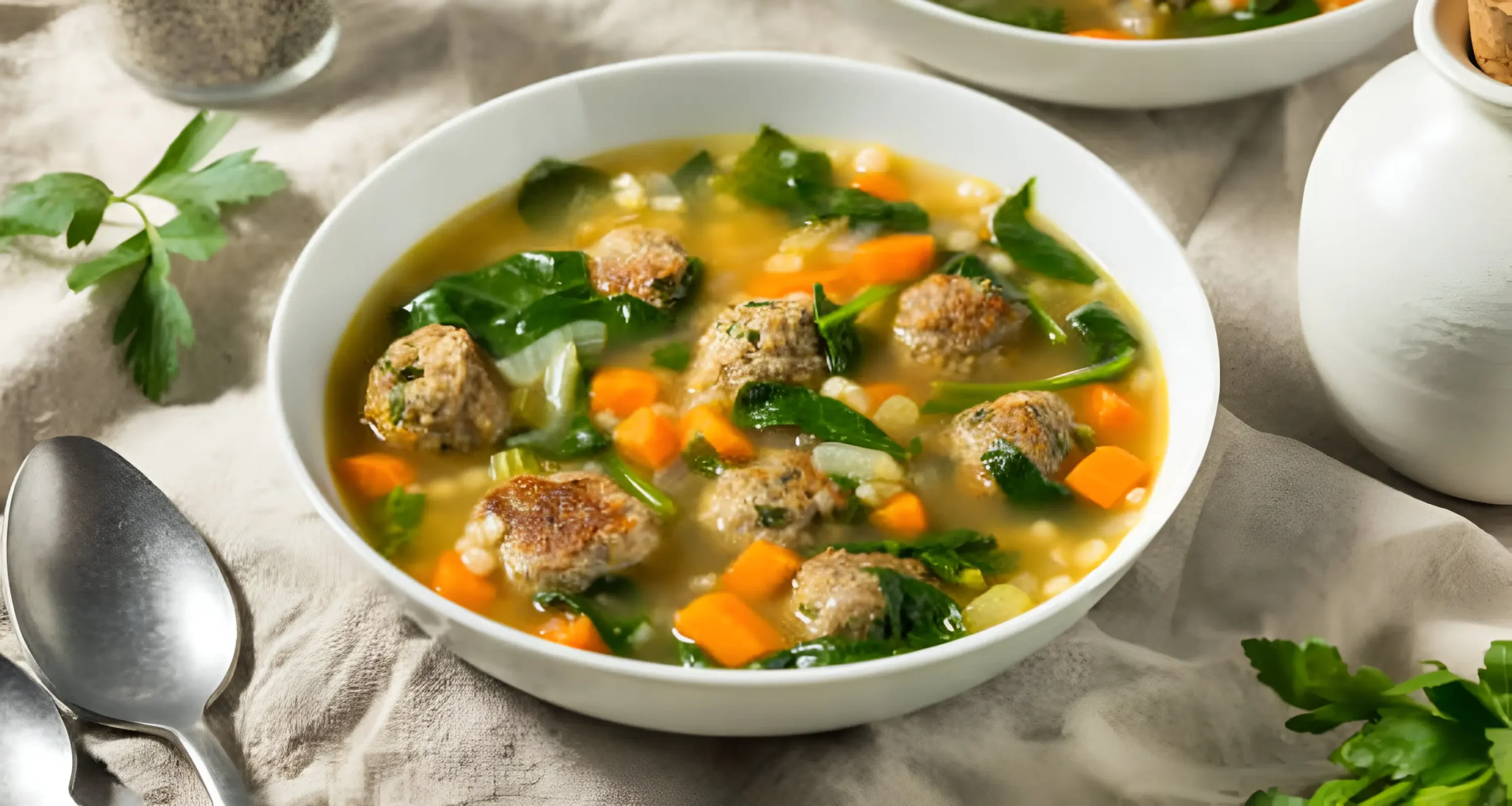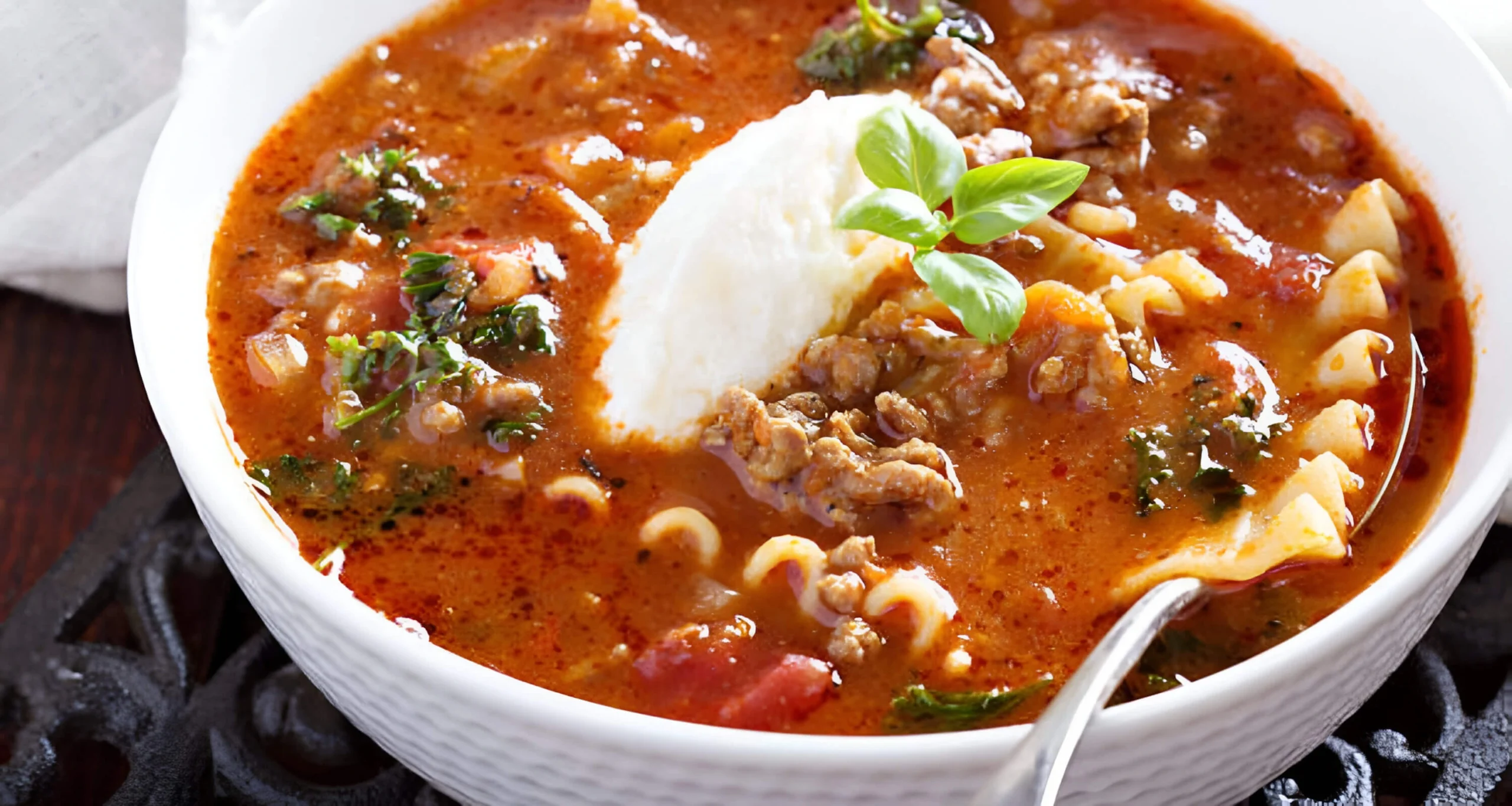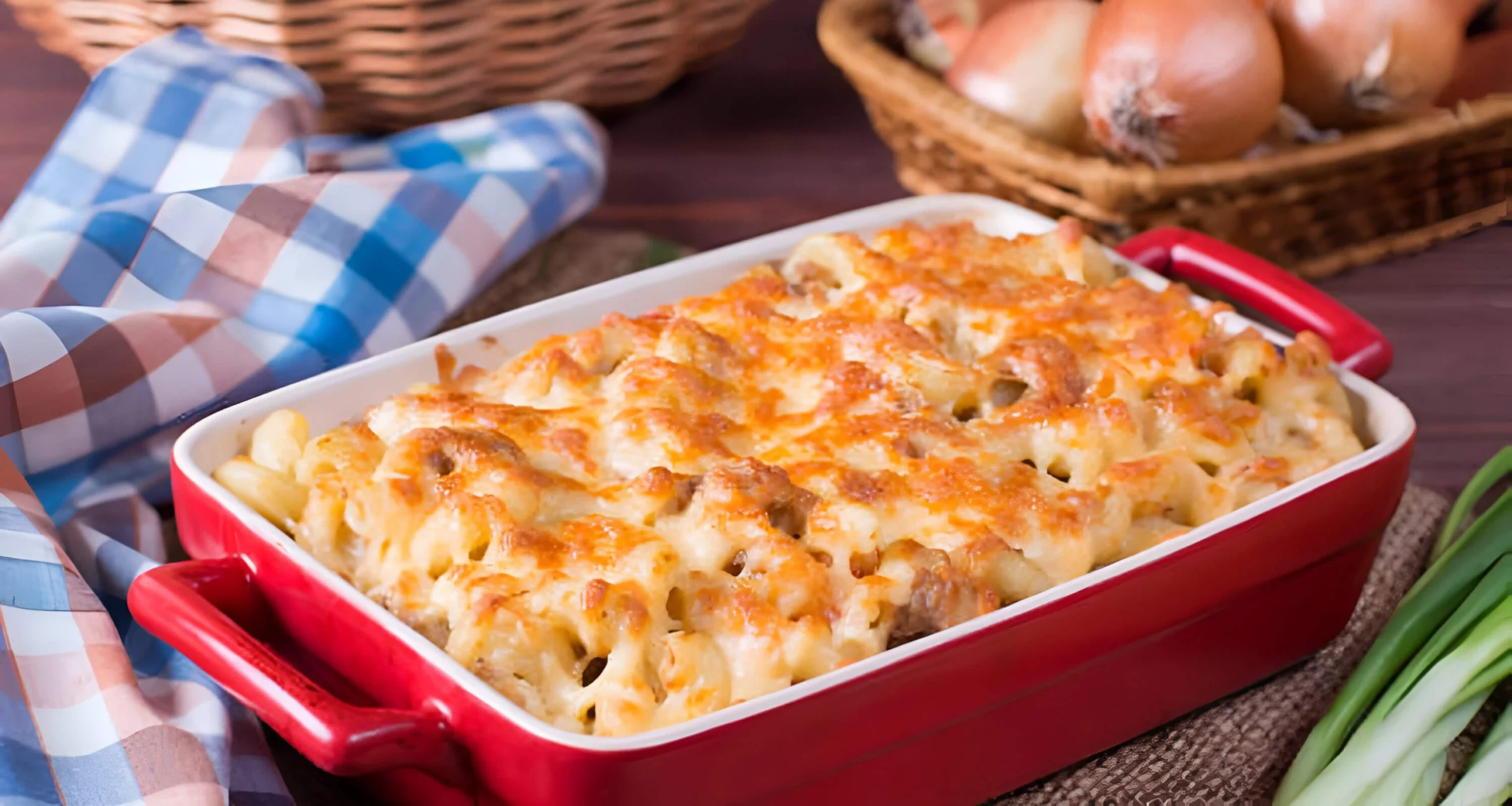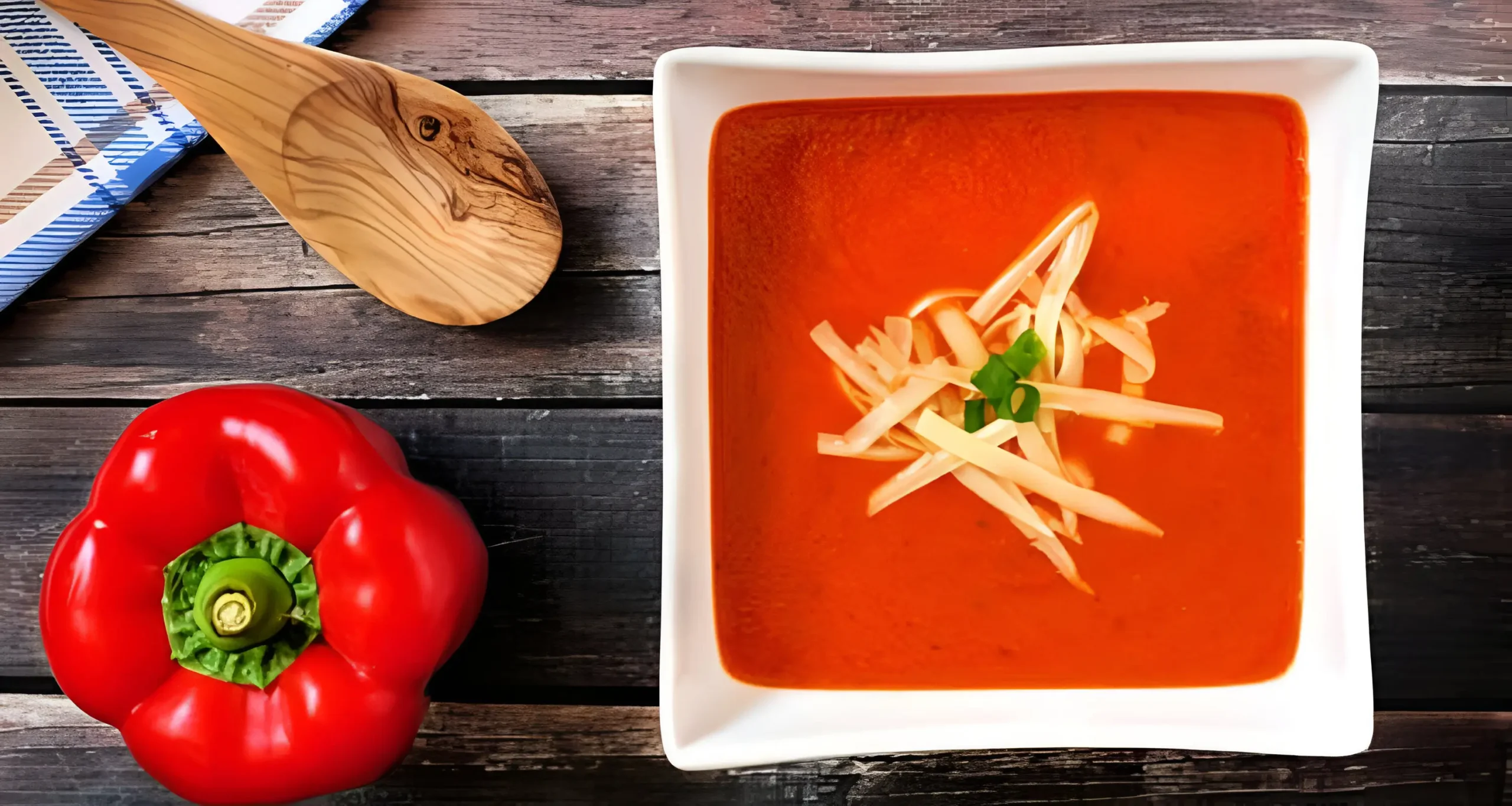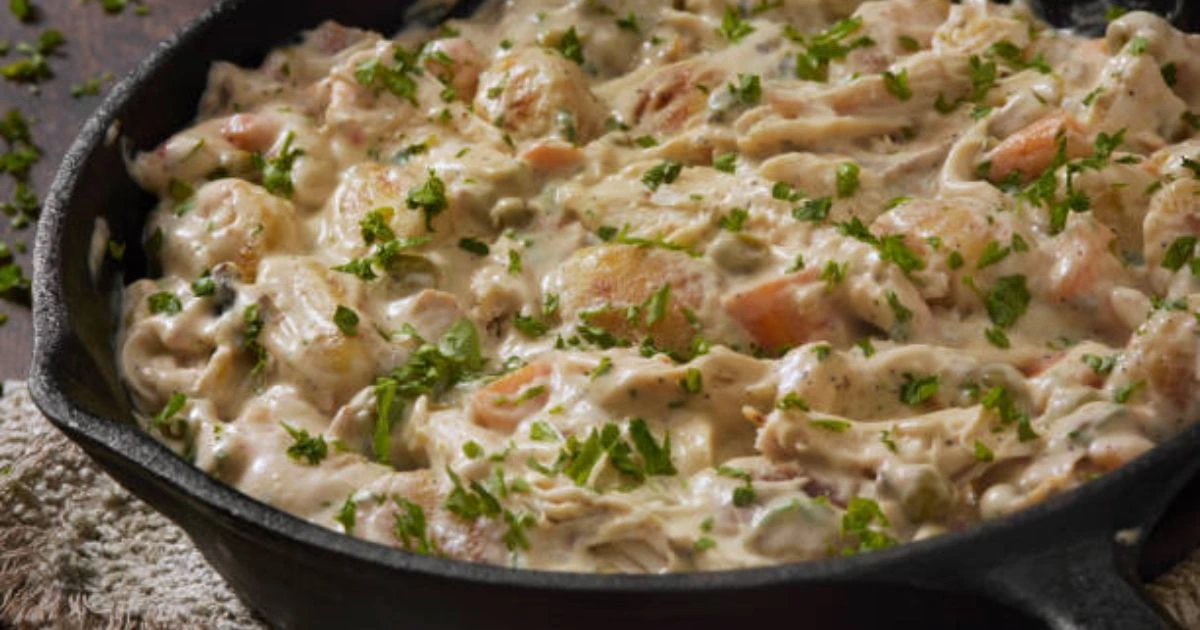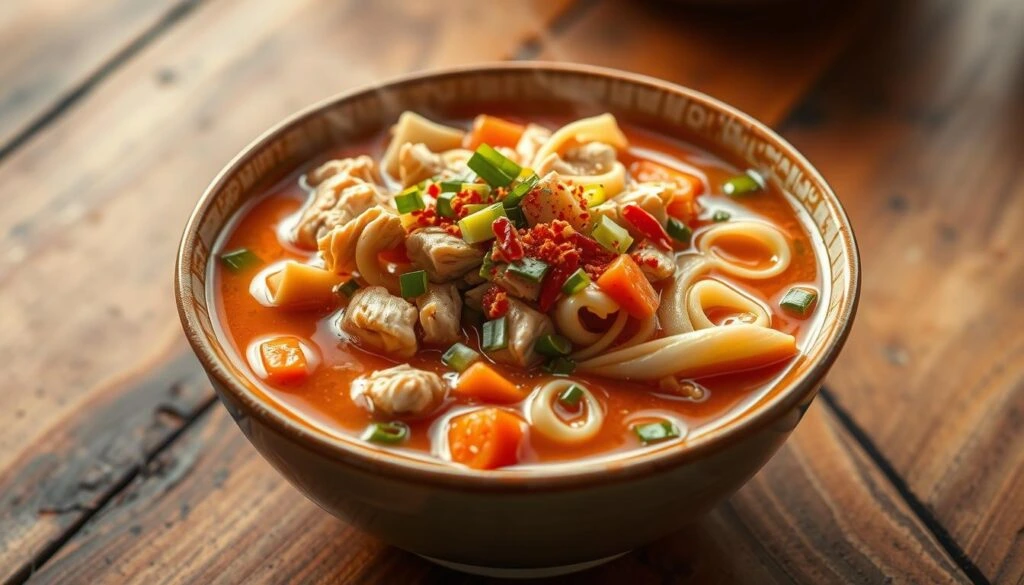lasagna soup with ricotta: 4 Secrets to Creamy Perfection

There are nights when you crave the warm, layered comfort of lasagna but don’t have the time or patience for a pan in the oven. I’ve stood in my own kitchen feeling that pull — late workday, chilly air, kids asking what’s for dinner — and wanted something that tastes like a hug on a spoon. This lasagna soup with ricotta brings those cozy flavors into one pot, and it’s the kind of meal that makes the whole family gather without the fuss.
This lasagna soup with ricotta is an easy lasagna soup with ricotta variation that combines rich tomato broth, tender pasta, and creamy ricotta for a lasagna soup with ricotta experience you can make on a weeknight. In this how-to guide, you will learn step-by-step instructions, how to choose the best ingredients, the equipment you’ll need, and tips for make-ahead, storage, and reheating.
The article covers why you’ll love this dish, a full ingredient breakdown, equipment list, detailed cooking method for the base, sauce, pasta, and ricotta, finishing touches, substitutions for dietary needs, and nutrition and serving ideas. You’ll find practical advice to help you prepare a hearty, comforting lasagna soup with ricotta with confidence.
Key Takeaways
- This recipe turns classic lasagna into a one-pot, weeknight-friendly meal.
- You’ll get clear, step-by-step guidance for an easy lasagna soup recipe.
- Tips include ingredient selection, equipment, and make-ahead storage.
- Ricotta is the finishing touch that makes this lasagna soup with ricotta feel indulgent.
- Variations and substitutions help adapt the ricotta lasagna soup to dietary needs.
Why you’ll love this lasagna soup with ricotta
This lasagna soup with ricotta brings all the flavors of classic lasagna to your table. It has a warm tomato broth, tender pasta, and savory meat or sausage. Loaded with cheese, this dish combines smooth ricotta and melted mozzarella.
Comfort-food flavors in a bowl
Imagine your favorite lasagna, but in a soup. The tomato base is filled with garlic and Italian herbs. This makes every spoonful taste like home.
The tender pasta absorbs the broth, while creamy ricotta adds a smooth, silky finish. This soup is as comforting as a baked lasagna but lighter.
Faster and easier than traditional lasagna
Forget about layering and long baking times. Brown the meat, simmer the broth, and cook the pasta in one pot. You can have this hearty soup ready in under 45 minutes.
Cleaning up is a breeze because everything cooks in one pot. It’s perfect for busy weeknights.
Customizable to suit your preferences and dietary needs
Want to change it up? Try using turkey, plant-based crumbles, or mushrooms. Gluten-free or low-carb pasta works too, letting you tailor the dish to your diet.
Make it lighter with low-fat ricotta and reduced-sodium broth. Or add some spice with red pepper flakes. This recipe is flexible, so you can enjoy lasagna flavors your way.
Ingredients you need for lasagna soup with ricotta
Start by gathering the essentials so your cooking flows without pauses. A clear list of recipe ingredients helps you shop quickly and avoid last-minute substitutions. Below you will find core pantry staples for soup, fresh items, and tips on choosing the best ricotta for texture and flavor.
Core pantry staples and fresh items
Keep these on hand for a reliable bowl of lasagna soup with ricotta. Olive oil, 1 large onion, 3–4 cloves garlic, and 1 lb ground beef, pork, turkey, or 12–16 oz mushrooms for a vegetarian version form the base. Use a 28 oz can of crushed tomatoes and 2 tbsp tomato paste to build the sauce. Have 4 cups chicken or vegetable broth ready, plus 1 tsp dried oregano, 1 tsp dried basil, a bay leaf, salt, and pepper.
For the pasta and cheese, use 8 oz of broken lasagna noodles or short pasta such as rigatoni, 2 cups shredded mozzarella, ½ cup grated Parmesan, and 1 to 1½ cups ricotta cheese. Add red pepper flakes for a touch of heat and fresh basil to finish. These ingredients provide a balance of flavor, texture, and structure for the dish.
Picking the best ricotta for texture and flavor
Pick whole-milk ricotta when you want creaminess and a richer mouthfeel. Brands such as Galbani and Calabro often deliver a smooth, slightly sweet ricotta that holds up well in hot soup. Avoid watery container ricotta; drain it in a fine-mesh sieve or line a bowl with cheesecloth and chill for 30 minutes to remove excess liquid.
Whip ricotta with a pinch of salt, black pepper, 2 tbsp grated Parmesan, and a beaten egg or a little lemon zest to stabilize and brighten the mixture. That step yields a spoonable dollop that contrasts the tomato broth and pasta in your lasagna soup with ricotta.
Optional add-ins and substitutions
Swap or add ingredients to match your pantry and diet. Use Italian sausage instead of plain ground meat for bolder flavor. Deglaze the pan with 1/2 cup red wine when you brown meat or mushrooms for depth. Stir in 2 cups fresh spinach or chopped kale toward the end for color and nutrients.
For plant-based or allergy needs, try lentils or firm tofu for protein and coconut- or almond-based ricotta alternatives for dairy-free options. Use gluten-free lasagna sheets or konjac-based pasta for low-carb versions. Note that denser swaps like lentils and gluten-free pasta may change cooking times and liquid ratios, so add broth a little at a time until the soup reaches the right consistency.
| Ingredient | Typical Quantity | Purpose / Tip |
|---|---|---|
| Olive oil | 2 tbsp | Sauté aromatics; use extra for richer mouthfeel |
| Onion & garlic | 1 large onion, 3–4 cloves garlic | Builds savory base; cook until soft and fragrant |
| Ground meat or mushrooms | 1 lb meat or 12–16 oz mushrooms | Protein or vegetarian umami; brown well for flavor |
| Crushed tomatoes | 28 oz can | Main body of the broth; use quality tomatoes |
| Tomato paste | 2 tbsp | Concentrates tomato flavor and thickens broth |
| Broth | 4 cups | Controls soup depth; add more for thinner broth |
| Dried herbs & bay leaf | 1 tsp oregano, 1 tsp basil, 1 bay leaf | Classic Italian seasoning backbone |
| Pasta (broken lasagna or short) | 8 oz | Use broken lasagna for authentic texture |
| Mozzarella & Parmesan | 2 cups shredded, 1/2 cup grated | Melted finish and salty umami kick |
| Ricotta | 1–1 1/2 cups | Choose best ricotta; drain and whip for stability |
| Optional add-ins | Spinach, sausage, red wine, lentils | Customize flavor and nutrition; adjust liquids/time |
Equipment and kitchen tools to make the recipe
To make lasagna soup with ricotta, you need gear that heats evenly. It should also have enough room for pasta and broth. A sturdy pot and some handy utensils will make the process smooth from start to finish.
Essential cookware and utensils
Start with a heavy-bottomed Dutch oven or a large 6–8 quart stockpot. These are great for one-pot recipes because they keep heat well and prevent scorching. This is important when simmering tomato broth and cooking pasta.
Use a sharp chef’s knife and a solid cutting board for chopping vegetables and herbs. A wooden spoon or silicone spatula is good for sautéing and stirring. Keep measuring cups and spoons ready for accurate seasoning.
A colander is useful for draining excess water from pasta or rinsing canned beans. Finish with a ladle for serving and shallow bowls for the ricotta dollops.
Time-saving tools and tips
An immersion blender can make your broth smoother right in the pot. Kitchen shears let you cut lasagna noodles or sheets into the pot without mess.
Silicone tongs help stir and lift pasta gently, keeping its texture. A food thermometer is handy for browning meat safely.
Prep your ingredients before starting. This mise en place speeds up cooking. If you’re short on time, use pre-shredded mozzarella or pre-minced garlic without losing flavor.
| Tool | Why it helps | Recommended use |
|---|---|---|
| 6–8 qt Dutch oven or stockpot | Even heat distribution and enough capacity | Simmer broth, cook pasta, finish soup in one pot |
| Chef’s knife & cutting board | Faster, safer chopping and even pieces | Prep onions, garlic, herbs, and vegetables |
| Wooden spoon or silicone spatula | Nonreactive stirring and scraping | Sauté aromatics and stir meat or sauce |
| Colander | Quick draining and rinsing | Drain pasta or rinse canned ingredients |
| Immersion blender | Blends without pot transfer | Create a slightly puréed tomato broth if desired |
| Kitchen shears | Cut noodles cleanly in the pot | Trim lasagna sheets to fit and drop into broth |
| Silicone tongs | Gentle handling of pasta and cheese | Stir and serve without scratching cookware |
| Measuring cups & spoons | Consistent seasoning and ratios | Measure broth, tomato paste, and spices |
| Food thermometer | Accurate internal temps for meat | Check ground beef or sausage when browning |
Step-by-step recipe: preparing the base and sauce
Begin with a solid plan for the base of your lasagna soup with ricotta. This ensures it has deep, layered flavors. You’ll learn to sauté aromatics, brown meat, create a rich tomato broth, and balance seasoning and acidity.
Sautéing aromatics and browning meat
Start by heating 2 to 3 tablespoons of olive oil in a large pot over medium heat. Add a diced yellow onion and cook until it’s translucent. Then, stir in 3 to 4 cloves of minced garlic and cook for 30 to 60 seconds until fragrant.
Next, add 1 pound of ground beef, Italian sausage, or a combination. Break the meat into small pieces and spread it evenly in the hot pan. Season with salt early to draw out moisture, then raise the heat to encourage browning, which enhances the broth’s rich flavor.
If using mushrooms, sear them separately until they dry out and start to brown. Then, add them to the meat once both are well browned.
Building a rich tomato broth
After the meat browns, deglaze the pot with a splash of red wine or 1/2 cup of low-sodium chicken broth. This helps scrape up the brown bits. Add 2 tablespoons of tomato paste and cook until it darkens slightly to develop a sweet, concentrated flavor.
Pour in a 28-ounce can of crushed tomatoes, a 15-ounce can of tomato sauce, and 4 cups of beef or chicken broth. Stir in 1 teaspoon dried oregano, 1 teaspoon dried basil, a bay leaf, and a pinch of red pepper flakes if desired. Simmer for 10 to 20 minutes to let the flavors meld.
Balancing seasoning and acidity
Taste the broth as it reduces and adjust seasoning in stages. If it’s too acidic, add a pinch of sugar or grate in a carrot. For brightness, try a splash of balsamic vinegar or a teaspoon of lemon juice.
Season with salt and pepper after the soup has finished simmering, adjusting to taste. Remember, flavors concentrate as liquid evaporates, so season gradually. Remove the bay leaf before serving and do a final taste to confirm balance.
Tips for cooking the pasta perfectly in the lasagna soup with ricotta.
Perfectly cooked pasta is essential for a delicious lasagna soup with ricotta. You want tender noodles that stay firm in the tomato broth. Follow a few simple rules for a fresh and balanced taste every time.
Choosing the right pasta shape
For an authentic feel, use broken lasagna sheets. They offer familiar layers and a hearty bite. If you prefer tube shapes, pick rigatoni or penne for sturdiness.
Mafaldine and other thicker ribbons also work well in simmering. Thicker dried pastas resist turning to mush faster than thin varieties. Remember, fresh pasta cooks faster than dried, so adjust timing if you swap types.
Timing the pasta so it doesn’t overcook
Add pasta near the end of cooking to keep the broth bright and flavorful. Follow package times but subtract 1 to 2 minutes because cooking pasta in soup continues from residual heat. Stir gently after adding to avoid clumping.
Taste-test for al dente texture before serving. If you are using pre-cooked or leftover pasta, add it only long enough to warm through to avoid mushy pasta.
Maintaining texture if reheating or storing
If you plan to store or reheat, cook pasta slightly underdone to preserve bite. When possible, keep pasta and broth separate in storage. This ensures the pasta stays firm and the flavors remain vibrant.
If the soup is stored together, refresh the texture by simmering briefly in extra broth or adding a splash of water while reheating.
Creating the ricotta mixture and finishing touches

Before you serve, make a creamy ricotta mix and pick some tasty toppings. A simple, seasoned topping can make a big difference. It turns a good soup into a memorable one without much effort.
Seasoning the ricotta for the best bite
Drain the whey from whole-milk ricotta to make it thicker. Mix the cheese with Parmesan, salt, black pepper, garlic powder, or minced garlic.
Add chopped parsley or basil. If you want it to hold shape, mix in a lightly beaten egg. Grate some lemon zest for brightness. This seasoned ricotta balances flavors so each spoonful is lively.
Layering or dolloping ricotta into bowls
You can serve it two ways. Stir small spoonfuls into hot bowls for creamy ribbons in the broth. This method spreads the richness evenly.
Or, place a single quenelle or large dollop in the center of each bowl. This looks elegant and keeps the ricotta from melting too fast. It lets diners control how much they mix in.
Garnishes that elevate presentation and flavor
Top with shredded mozzarella and extra Parmesan or Pecorino Romano for flavor. Finish with a drizzle of extra-virgin olive oil and a sprinkle of torn basil or parsley for a fresh touch.
Add cracked black pepper and red pepper flakes for heat. For texture, sprinkle toasted breadcrumbs or a pinch of lemon zest. Thoughtful garnishes make every bowl special and complete your seasoned ricotta dish.
Variations and substitutions for dietary needs
You can make this lasagna soup with ricotta fit many diets without losing its taste. Here are some easy swaps and tips. They help keep the soup’s texture and balance, making it vegetarian, gluten-free, low-carb, or lower in sodium and fat.
Vegetarian and meat-free options
Swap ground beef with Beyond Meat or Impossible for a direct substitute. These plant-based crumbles brown and season well. Brown or green lentils add protein and a meaty texture at a good price.
Chopped cremini mushrooms and roasted eggplant add a rich flavor when caramelized. Use vegetable broth instead of beef broth. Add soy sauce, white miso, or sun-dried tomatoes for extra umami.
Gluten-free and low-carb adjustments
For a gluten-free soup, use gluten-free lasagna noodles from brands like Schär or Jovial. Or, try gluten-free short pasta broken into pieces. Gluten-free pasta soaks up liquid fast, so add it late and check often.
For a low-carb soup, use shirataki noodles, zucchini noodles, or eggplant slices. Add zoodles last to keep them firm. Adjust broth and simmer time to avoid a watery soup.
Lower-sodium and lighter versions
Use low-sodium broth and no-salt-added canned tomatoes. Choose lean ground turkey to cut fat. Use part-skim or reduced-fat ricotta and light mozzarella to reduce calories.
Add more veggies like bell peppers, zucchini, or spinach to make the soup more filling. A squeeze of lemon juice or a teaspoon of red wine vinegar can brighten the flavor. These changes make a lighter lasagna soup that’s also satisfying.
Make-ahead, storage, and reheating tips
Plan ahead to keep your lasagna soup with ricotta fresh and tasty. Cool the soup in two hours, then put it in shallow airtight containers. If you plan to add ricotta later, keep it in airtight containers for 3–4 days, and be sure to label each with the date.
How to cool and refrigerate safely
Allow the hot soup to cool at room temperature for a maximum of two hours. Use shallow containers to cool faster and put them in the fridge when lukewarm. Store the soup for 3–4 days. Keep ricotta separate to keep its texture and flavor.
Freezing guidelines and thawing tips
To freeze lasagna soup with ricotta, remove cooked pasta first. Spoon cooled broth and fillings into freezer-safe containers, leaving a 1-inch space for expansion. Store in a sealed container and freeze for up to three months. Freeze ricotta only if it’s part of a stable mixture; plain ricotta can change texture after thawing.
Best methods for reheating without losing texture
Thaw frozen lasagna soup with ricotta in the refrigerator overnight. Reheat gently on the stovetop over medium-low heat, stirring and adding broth or water to maintain a smooth texture. If the pasta has softened, stir in some freshly cooked pasta to revive it.
Quick reheating options
You can reheat pasta soup in the microwave by warming it in short intervals, stirring between each session to ensure even heating. For the creamiest finish, add refrigerated ricotta to each bowl just before serving. These steps help keep the soup’s texture and flavor when reheating or serving leftovers.
Serving suggestions and side dishes

When you serve lasagna soup with ricotta, think about adding some sides. Choose dishes that balance the rich tomato broth and creamy cheese. Opt for light, bright tastes to cut through the soup’s warmth.
Simple salads and vegetable sides
Begin the meal with a refreshing arugula salad tossed in a zesty lemon vinaigrette. It lifts the flavors. A classic Caesar salad adds savory crunch for a heartier option.
Serve roasted asparagus or steamed green beans for added texture, or pair with a tomato-cucumber salad dressed in red wine vinegar to complement the soup’s acidity.
Breads and appetizers that pair well
Pick crusty Italian bread or ciabatta for dipping. It’s perfect for scooping up broth and ricotta. Garlic bread or cheesy focaccia add a warm, indulgent touch that guests love.
Bruschetta topped with tomato and basil echoes the soup’s flavors. Create an antipasto platter featuring olives, marinated artichokes, and thinly sliced salami for a flavorful starter. Or, choose vegetarian options if needed.
Wine and beverage pairing ideas
For wine, choose medium-bodied reds like Chianti, Sangiovese, or Montepulciano. These wines match the tomato acidity and Italian herbs. They don’t mask the ricotta’s creaminess.
If you prefer white, a crisp Pinot Grigio or Vermentino cleanses the palate. It complements the cheese. Nonalcoholic options include sparkling water with lemon, iced tea, or a light Italian soda.
| Course | Option | Why it works |
|---|---|---|
| Salad | Arugula with lemon vinaigrette | Bright acidity cuts richness and refreshes the palate |
| Vegetable | Roasted asparagus | Earthy, tender stalks add contrast in texture |
| Bread | Crusty ciabatta | Sturdy for dipping and absorbs tomato broth well |
| Appetizer | Bruschetta with tomato and basil | Echoes soup flavors and adds fresh brightness |
| Red wine | Chianti or Sangiovese | Medium body complements tomato acidity and herbs |
| White wine | Pinot Grigio or Vermentino | Crispness pairs with ricotta’s creaminess |
| Nonalcoholic | Sparkling water with lemon | Light, refreshing, and palate-cleansing |
Common mistakes to avoid when making lasagna soup with ricotta
Making lasagna soup with ricotta is forgiving if you skip a few traps. Here are three common cooking mistakes along with simple solutions to avoid them next time.
Overcooking the pasta
One of the most frequent common cooking mistakes is adding pasta too early. Pasta soaks up broth and swells. If you leave it in while the lasagna soup with ricotta simmers, you will not be able to avoid mushy pasta.
Add pasta toward the end and cook to al dente. If you expect leftovers, cook the pasta separately and combine portions when serving to preserve texture.
Using watery ricotta without draining
Many store-bought ricottas hold excess whey that thins the broth and mutes flavor. To control consistency, drain the ricotta in a fine mesh sieve or cheesecloth for 10–30 minutes.
If you want a richer result, make a stabilized mixture by folding in Parmesan and an egg before adding it to bowls. This step shows how to use ricotta so it holds its shape and enhances each spoonful.
Skipping seasoning in stages
Layered seasoning makes a deeper soup. Salt and pepper added only at the end often leave individual components underseasoned.
Season aromatics during the sauté, taste browned meat and adjust, then recheck after the final simmer.Add a touch of acidity or a hint of sugar at the end to balance the tomato base.
| Problem | Cause | Quick Fix |
|---|---|---|
| Overcooked pasta | Pasta added too early; simmers with soup | Add pasta in last 8–10 minutes; or cook separately for leftovers |
| Watery ricotta | Excess whey in store-bought ricotta | Drain 10–30 minutes or stabilize with Parmesan and egg |
| Flat flavor | Seasoning only at the end | Season at each stage and taste after simmering |
Nutrition information and portion guidance
Before you serve, check the nutrition info. A bowl of lasagna soup with ricotta is about 1 1/2 cups. It has a good mix of protein, carbs, and fat.
Estimated calories and macronutrients
A serving size of 1 1/2 cups has about 350–550 calories. It has 20–35 g of protein, 30–45 g of carbs, and 12–25 g of fat. Using lean meats and part-skim ricotta lowers these numbers. Full-fat cheeses increase calories and richness.
Adjusting portions for families or meal prep
To double the recipe for meal prep, just double the ingredients. Portion it into containers for 1 to 1 1/2 cups per adult. Adding a side salad makes the meal feel bigger without adding too many calories.
Swapping ingredients to change nutrition profile
Replace ground beef with turkey to cut fat. Use whole-wheat pasta for more fiber. Swap part-skim ricotta for less fat but keep creaminess. Add extra veggies or lentils for more fiber and nutrients.
| Change | Effect on calories per serving | Effect on macronutrients | When to choose |
|---|---|---|---|
| Ground turkey instead of beef | Reduces calories by ~30–60 kcal | Lower fat, similar protein | When you want a leaner, healthy lasagna soup |
| Part-skim ricotta instead of full-fat | Reduces calories by ~40–80 kcal | Less saturated fat, similar protein | When you want creamy texture with fewer calories |
| Whole-wheat pasta instead of regular | Small calorie change, more fiber | Carbs similar, fiber up by 3–6 g | When you want better digestion and satiety |
| Less pasta / more vegetables | Reduces calories per serving by 50–100 kcal | Carbs down, fiber and micronutrients up | When you want a lighter, nutrient-dense bowl |
| Low-sodium broth and tomatoes | Minor calorie change | Sodium reduced significantly | When you need to manage blood pressure or sodium intake |
Conclusion
You now know how to make lasagna soup with ricotta. It’s fast and captures the taste of classic lasagna. You learned about choosing ingredients and tools, making a rich tomato base, and cooking pasta just right.
Adding a seasoned ricotta makes it creamy. This recipe is perfect for a quick weeknight meal. It keeps the comforting layers of Italian cooking.
For the best taste, brown your meat well and watch the pasta. Don’t let it get mushy. If ricotta is watery, drain or stabilize it.
Store leftovers in airtight containers or freeze them. This keeps the texture right. Using brands like Galbani ricotta or Jovial gluten-free pasta helps keep consistency.
Try the recipe tonight and make it your own. Add vegetarian, gluten-free, or lighter options. Serve it with a green salad and crusty bread for a full meal.
When you try different versions, note your favorite brands and techniques. This way, your next lasagna soup with ricotta will be a hit at family dinners and gatherings.
FAQ
What is lasagna soup with ricotta and how does it differ from traditional lasagna?
Lasagna soup with ricotta is like a layered lasagna but in a lasagna soup with ricotta. It has tomato, herbs, meat or mushrooms, and mozzarella. But instead of baking, it’s a quick, easy meal in one pot.
Which ricotta is best for this recipe and do I need to prepare it before adding?
Use whole-milk ricotta for the best creaminess. Brands like Galbani or Calabro work well. Drain it in a fine-mesh sieve to avoid thinning the soup.For a creamy dollop, mix ricotta with Parmesan, salt, pepper, lemon zest, and a bit of olive oil or egg.
Can I make this lasagna soup vegetarian or use plant-based substitutes?
Yes. Use sautéed mushrooms, cooked lentils, or plant-based crumbles instead of ground beef. Add vegetable broth and soy sauce for flavor. For a dairy-free version, use coconut- or almond-based ricotta.
What pasta should I use and when do I add it to prevent mushy noodles?
Broken lasagna sheets are best, but rigatoni or penne work too. Add pasta near the end of cooking and cook until al dente. If you have leftovers, cook pasta a bit less to avoid sogginess.
How do I brown the meat properly and why is it important?
Brown meat in batches over medium-high heat in a Dutch oven. Don’t overcrowd the pot. Season lightly while browning. Proper browning makes the soup richer and more savory.
My tomatoes taste too acidic—how do I balance the sauce?
Add a pinch of sugar or grated carrot to mellow acidity. A splash of balsamic vinegar or lemon brightens flavors. Season in stages for a well-balanced taste.
Can I make the soup ahead and what is the best storage method?
Yes. Cool soup to room temperature, then refrigerate in shallow containers. Store pasta and ricotta separately for best texture. The soup keeps 3–4 days in the fridge. Freeze the broth without pasta for up to 3 months.
What’s the best way to reheat the soup without losing texture?
Reheat gently on the stovetop over medium-low heat. Add broth or water to restore consistency. If pasta is too soft, add fresh pasta or simmer briefly. In the microwave, reheat in short intervals and stir between.
How should I season and use the ricotta when serving?
Whisk ricotta with Parmesan, salt, pepper, parsley or basil, and lemon zest or egg. Spoon dollops into bowls for a prettier presentation. This way, you can swirl it in or stir it through the soup.
What equipment do I need to make lasagna soup efficiently?
Use a heavy-bottomed Dutch oven or 6–8 quart stockpot. You’ll also need a chef’s knife, cutting board, and measuring cups. A fine-mesh sieve and ladle are helpful. Time-saving tools include kitchen shears, an immersion blender, and silicone tongs.
Can this dish be adjusted to suit gluten-free or low-carb preferences?
For a gluten-free option, swap in gluten-free lasagna noodles. If you’re going low-carb, try shirataki noodles or spiralized zucchini, and be sure to adjust cooking times and liquids accordingly.
What garnishes and side dishes pair best with lasagna soup?
Finish each bowl with a sprinkle of mozzarella, Parmesan, fresh basil, and a dash of black pepper. Drizzle with olive oil. Serve with ciabatta, garlic bread, or focaccia. Simple sides like an arugula salad or roasted green beans cut the richness. For wine, try Chianti or Sangiovese; for nonalcoholic, sparkling water with lemon works well.
What common mistakes should I avoid when making this soup?
Don’t add pasta too early or it will become mushy. Always drain watery ricotta. Season in stages for depth. Avoid overcrowding the pan when browning meat and be mindful of simmer time.
How many calories and macronutrients are in a typical serving?
A typical 1½-cup serving has 350–550 calories. It has 20–35 g protein, 30–45 g carbohydrates, and 12–25 g fat. Using lean protein and part-skim ricotta lowers calories and fat. Increasing vegetables raises fiber and micronutrients.
Add a Dash of Your Thoughts!
There are no reviews yet. Be the first one to write one.

